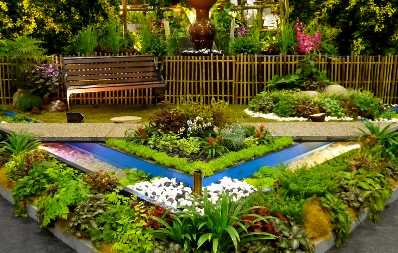- Sections :
- Crime & Public Safety
- Restaurants & Food
- Sports
- More
Categories
How to turn your yard into an edible landscape

HOUSTON, Texas – Beautiful, temperate weather in the autumn months makes spending time outdoors all the more enjoyable. When planting for the season, homeowners have a unique opportunity to create a landscape that includes fruit and nut trees, shrubs and plants that will provide interest, value and home-grown food to their outdoor spaces.
“An edible landscape is an exciting way to do something different with your yard, to really look at it from a bigger perspective and consider a wider variety of food-producing options in your decorative landscape,” said Mark Seavers, president of Seavers Landscape in Houston. “Unlike a simple vegetable garden, an edible landscape consists of plants that fit beautifully into the landscape, attract a variety of different birds to the area, and have the added benefit of producing fruits, nuts or herbs to enjoy.
Seavers recommends avocado or citrus trees, rather than the standard crepe myrtle tree, as accents. “Make your accent trees in the corner of your yard or home a production plant,” Seavers said. “Citrus trees give off an excellent fragrance.” Some ideas for citrus trees include grapefruit, lime, lemon, cumquat and orange. “An added benefit is that some citrus host butterflies in the spring.”
For shade, Seavers recommends pecan trees. “Peach trees are also a great idea. They have a beautiful pink bloom in early spring and will produce fruit in July.”
Seavers points out that having food-producing plants in your landscape brings fresh food to your table and provides benefit for both native and migratory birds. “There are lots of ideas that are beautiful, delicious and safe to eat and to cook with.” There are fall vegetables, blackberry canes, blueberry shrubs, and herbs that can be planted at this time of year. “Herbs that I would recommend are basil, oregano, thyme, and prostrate rosemary which makes a good ground cover,” Seavers said. “Pots of bay leaf are good for cooking as well, but be sure to keep them away from the wind.”
Even in shaded back yards, food producing plants can fit beautifully into the landscape and require little maintenance. For inspiration and ideas, visit www.seaverslandscape.com.
Landscape expert offers ideas for fruit-bearing trees, shrubs and plants for your decorative beds
“An edible landscape is an exciting way to do something different with your yard, to really look at it from a bigger perspective and consider a wider variety of food-producing options in your decorative landscape,” said Mark Seavers, president of Seavers Landscape in Houston. “Unlike a simple vegetable garden, an edible landscape consists of plants that fit beautifully into the landscape, attract a variety of different birds to the area, and have the added benefit of producing fruits, nuts or herbs to enjoy.
Seavers recommends avocado or citrus trees, rather than the standard crepe myrtle tree, as accents. “Make your accent trees in the corner of your yard or home a production plant,” Seavers said. “Citrus trees give off an excellent fragrance.” Some ideas for citrus trees include grapefruit, lime, lemon, cumquat and orange. “An added benefit is that some citrus host butterflies in the spring.”
For shade, Seavers recommends pecan trees. “Peach trees are also a great idea. They have a beautiful pink bloom in early spring and will produce fruit in July.”
Seavers points out that having food-producing plants in your landscape brings fresh food to your table and provides benefit for both native and migratory birds. “There are lots of ideas that are beautiful, delicious and safe to eat and to cook with.” There are fall vegetables, blackberry canes, blueberry shrubs, and herbs that can be planted at this time of year. “Herbs that I would recommend are basil, oregano, thyme, and prostrate rosemary which makes a good ground cover,” Seavers said. “Pots of bay leaf are good for cooking as well, but be sure to keep them away from the wind.”
Even in shaded back yards, food producing plants can fit beautifully into the landscape and require little maintenance. For inspiration and ideas, visit www.seaverslandscape.com.
Comments •

















